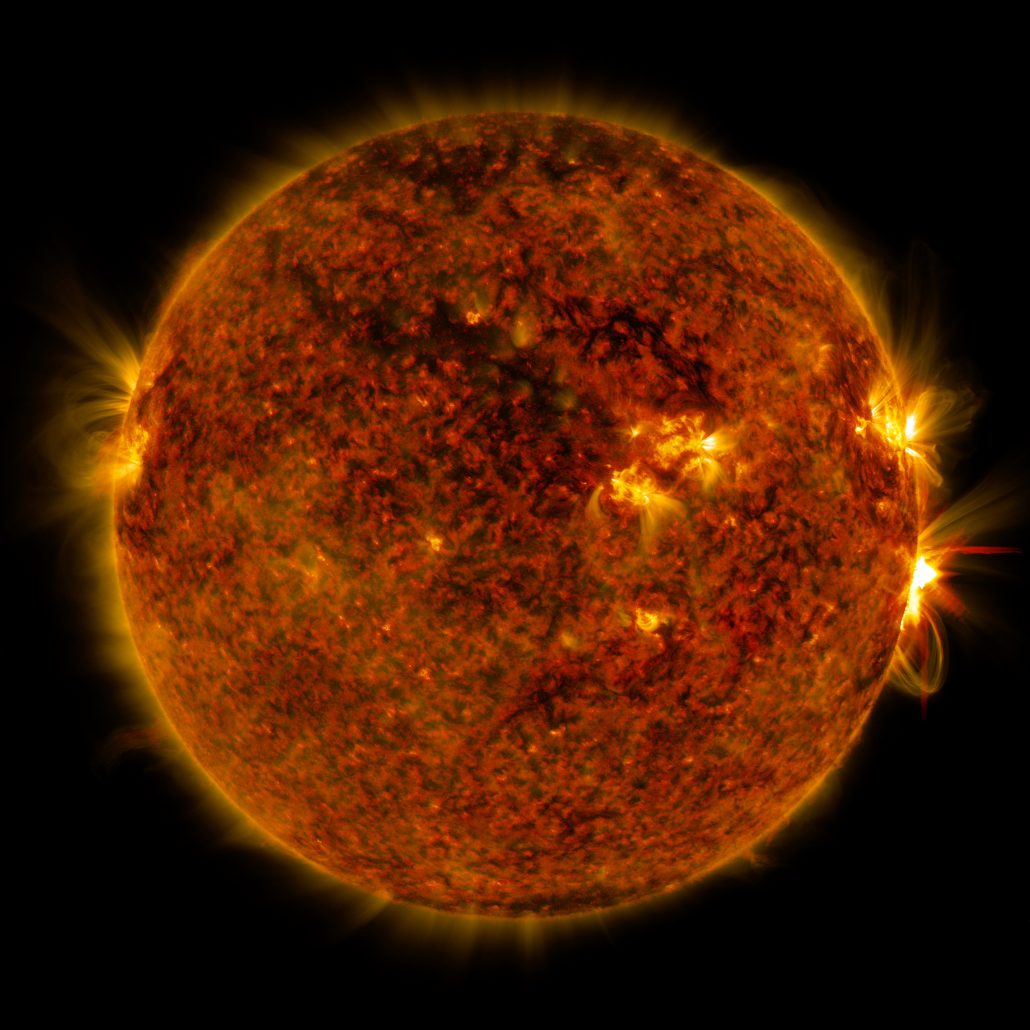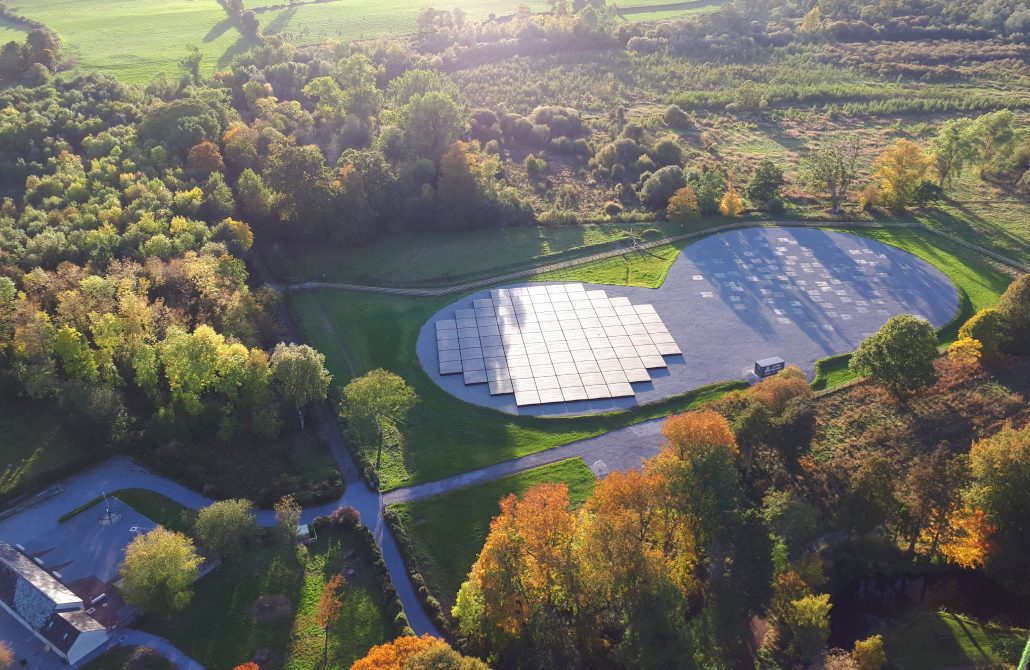LOFAR Radio Telescope Reveals Secrets of Solar Storms
Dublin, Ireland, February 18, 2019: An international team of scientists from Trinity College Dublin, the University of Helsinki, and the Dublin Institute for Advanced Studies today announced a major discovery on the nature of solar storms in the journal Nature Astronomy (PDF available at Springer Nature SharedIt).
The Sun is the closest star to our planet in the Universe, and like many stars, it is far from quiet. Sunspots, many times the size of Earth, can appear on its surface and store enormous reservoirs of energy. And it is within these regions that huge explosions called solar storms occur.
Solar storms are spectacular eruptions of billions of tonnes of hot gas travelling at millions of kilometres an hour. If they impact the Earth, they can produce beautiful displays of the aurora, but they can also cause problems with communication and navigation systems and power grids.
In 1859, the largest solar storm ever observed – the so-called Carrington Event – erupted. Within hours, it generated displays of the aurora as far south as Italy and Cuba and caused interruptions in early telegraph systems in Europe and the US. In Ireland, it reportedly stopped London stock market prices being received in Dublin “due to a strange atmospheric phenomenon”.

Image of a solar flare observed by NASA’s Solar Dynamics Observatory on September 10, 2017. Credit: NASA/SDO. Print resolution available from NASA SVS.
Our society is now even more dependent on technology, and solar storms have the potential to cause significant effect on their performance. In 2003, transformers in South Africa were damaged, while Swedish air traffic control systems were closed down in 2015 for more than an hour due to effects associated with a solar storm. More recently, emergency response communications were interrupted during hurricane season in September 2017 in the Caribbean.
“We used data from the Low Frequency Array, LOFAR, together with images from NASA, NOAA and ESA spacecraft to work out where particles are accelerated by the particularly large solar storm on September 10, 2017, soon after we turned on the Irish LOFAR station”, said Dr Diana Morosan, the lead author on the publication, and affiliated with Trinity and the University of Helsinki.

The Irish LOFAR radio telescope at Birr Castle, Co. Offaly, Ireland. Credit: Alison Delaney, Birr Castle. Print resolution: https://tinyurl.com/yc28ooyq
“We built the Irish LOFAR station at Birr Castle to study how solar storms move and how they generate bursts of radio waves”, according to Professor Peter Gallagher of the Dublin Institute for Advanced Studies, who leads the I-LOFAR project on behalf of Trinity. “We used I-LOFAR to detect tiny radio bursts in coordination with the LOFAR core in the Netherlands to work out where the burst were coming from.”
“Our observations enabled us to work out that the solar storm created a huge shock wave as it erupted from the Sun, which then accelerated electrons that generated radio bursts. This gives us an amazingly detailed insight into how solar storms work, and may in the future help us to produce more accurate forecasts of when solar radio bursts occur and how they impact the Earth”, said Dr Morosan.

The Sun and a radio burst captured in September 2017 by the NOAA GOES spacecraft and the LOFAR radio telescope. Credit: NOAA, LOFAR. Print resolution version: https://tinyurl.com/y8occar4
Speaking about the research, Professor Mark Ferguson, Director General of Science Foundation Ireland and Chief Scientific Adviser to the Government of Ireland, said: “Less than two years ago we officially launched the I-LOFAR radio telescope at Birr Castle, and it is fantastic to see the fascinating breakthroughs it has already made possible. It demonstrates the tangible rewards that arise from investing in cutting-edge infrastructure which facilitates collaborations between researchers and leads to exciting discoveries. I wish to congratulate the individuals from Trinity College Dublin, DIAS and University of Helsinki for their impressive work on solar storms, and I am confident that their future work with I-LOFAR will continue to provide us with invaluable insights.”
“These excellent results from I-LOFAR demonstrate the quality of the site in Ireland and the benefits of international collaboration in research and innovation. I am delighted to see such a return from the Government funding for I-LOFAR.” Minister of State for Training, Skills, Innovation, Research and Development, John Halligan T.D.
I-LOFAR is funded by Science Foundation Ireland and the Department of Department of Business, Enterprise and Innovation.
Access to PDF of the Nature Astronomy Publication
A PDF of the Nature Astronomy publication can be accessed free-of-charge at Springer Nature SharedIt.
Additional Notes
I-LOFAR is owned and operated at Birr Castle by Trinity College Dublin on behalf of the I-LOFAR Consortium, which includes Trinity College Dublin, Dublin Institute for Advanced Studies, Armagh Observatory & Planetarium, University College Dublin, University College Cork, National University of Ireland, Galway, and Athlone Institute of Technology.
The I-LOFAR fibre link is sponsored by open eir.
Media Contacts
Head of Irish LOFAR Consortium:
Professor Peter Gallagher
Trinity College Dublin and Dublin Institute for Advanced Studies
+353 87 656 8975
peter.gallagher@dias.ie
Lead author on Nature Astronomy paper:
Dr Diana Morosan
Trinity College Dublin and University of Helsinki
+358 50 317 5827
diana.morosan@helsinki.fi



